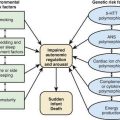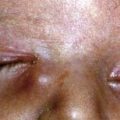Chapter 35 Foster and Kinship Care
Epidemiology
The number of children in foster care worldwide is unknown, although it has been estimated that 8 million may be in foster and residential care. In 2007 in the USA, approximately 783,000 children spent some time in foster care; 496,000 children were in foster care on any given day. These numbers represent a downward trend since 1999 when the daily average of children in care was 567,000. This decrease results from fewer admissions and more reunifications, placements with relatives or close family friends (kinship care), and adoptions of children who had been in foster care (Chapter 34). There may be up to 4 times as many children in informal kinship care as in certified foster care.
Health Issues
Multiple childhood adversities are compounded by the receipt of fragmented and inadequate health services before placement into foster care. As a result, children enter foster care with a high prevalence of chronic medical, mental health, developmental, dental, and educational problems (Table 35-1). Consequently, they are children with special health care needs. The greatest health care need of this population is for mental health services to address the impact of trauma, loss, and unpredictability. These children have higher rates of asthma, growth failure, vertically transmitted infections, and neurologic conditions than the general pediatric population. Obesity exceeds failure to thrive as the most prevalent nutritional disorder in foster care. Adolescents need access to reproductive health and substance abuse services. Up to 60% of young children have a developmental delay in at least 1 domain. Educational difficulties persist despite improvements in school attendance and performance for many children after placement in foster care. Almost half of children in foster care receive special education services.
Table 35-1 HEALTH ISSUES OF CHILDREN IN FOSTER CARE
CHRONIC MEDICAL PROBLEMS
ABUSE AND NEGLECT
COMPLEX CHRONIC MEDICAL PROBLEMS
MENTAL HEALTH CONCERNS
DEVELOPMENTAL PROBLEMS
DENTAL PROBLEMS
35% of children have significant dental disease
ADOLESCENT HEALTH ISSUES
High rates of sexually transmitted infections, high-risk behaviors, and substance abuse
EDUCATIONAL PROBLEMS
FAMILY RELATIONSHIP PROBLEMS
100% of children have family relationship problems
Health Care for Children and Adolescents in Foster Care
The American Academy of Pediatrics (AAP) and Child Welfare League of America published updated general guidelines for the health care of this special needs population in 2007. The AAP has also published detailed health care standards for children in foster care. Children should receive health care services in a medical home setting where they receive comprehensive health care that is continuous over time (Table 35-2). All health needs should be addressed compassionately and with an understanding of the effects of past trauma and ongoing uncertainty on a child’s health and well-being. Pediatricians should see children early and often when they first enter foster care. This provides an opportunity to identify all of a child’s health issues, support the child and foster parent through a major transition involving grief and loss for the child, and assess the child’s adjustment to foster care.
Table 35-2 PEDIATRIC MEDICAL HOME FOR CHILDREN IN FOSTER CARE
| CHARACTERISTIC | APPLICATION IN FOSTER CARE |
|---|---|
| Comprehensive health care |
Foster parents are the major therapeutic intervention of the foster care system, and pediatricians should provide them with appropriate education and support. Important topics include parenting children through transitions, providing a consistent and nurturing environment, and help children heal from past adversities (Table 35-3). Behavioral and emotional problems should be described within the framework of the child’s trauma history to remove blame and promote healing. Pediatricians should help parents focus on a child’s strengths and help each child develop skills needed for a successful life.
Table 35-3 ANTICIPATORY GUIDANCE FOR CHILDREN IN FOSTER CARE
| SITUATION | ANTICIPATORY GUIDANCE FOR FOSTER PARENTS |
|---|---|
| Preparing for visits | |
| Returning from visits and other transitions | |
| Relationship with birth parent(s) | |
| Building on child’s strengths | |
| Preparing for court dates | Have caseworker or law guardian explain purpose of court hearings to child in simple terms |
| School | |
| Adolescent |
AAP District II Task Force on Health Care for Children in Foster Care, District II Committee on Early Childhood, Adoption, and Dependent Care. Fostering health: health care for children and adolescents in foster care. Elk Grove, Ill: AAP; 2005. Available through the American Academy of Pediatrics Bookstore
Casey Family Programs. Improving family foster care: findings from the Northwest Foster Care Alumni Study. Seattle, WA. 2005. pp 1–64
Committee on CWLA Standards of Excellence. CWLA standards of excellence for health care services for children in out-of-home care. Washington, DC: Child Welfare League of America; 2007.
Courtney M. The transition to adulthood for youth ‘aging out’ of the foster care system. In: Osgood DW, Foster EM, Flanagan C, et al, editors. On your own without a net: the transitions to adulthood for vulnerable populations. Chicago: University of Chicago Press, 2005.
Horwitz SM, Owens P, Simms MD. Specialized assessments for children in foster care. Pediatrics. 2000;106:59.
Leslie LK, Gordon JN, Meneken L, et al. The physical, developmental, and mental health needs of young children in child welfare by initial placement type. J Dev Behav Pediatr. 2005;26:177-185.
National Working Group on Foster Care and Education, Casey Family Programs. Educational outcomes for children and youth in foster and out-of-home care (website). http://www.casey.org/NR/rdonlyres/A8991CAB-AFC1-4CF0-8121-7E4C31A2553F/598/National_EdFactSheet_2008.pdf. Accessed January 30, 2009
Newton RR, Litrownik AJ, Landsverk JA. Children and youth in foster care: disentangling the relationship between problem behaviors and number of placements. Child Abuse Neglect. 2000;24:1363-1374.
Rubin DM, Downes KJ, O’Reilly ALR, et al. Impact of kinship care on behavioral well-being for children in out-of-home care. Arch Pediatr Adolesc Med. 2008;162:550-556.
Rubin DM, O’Reilly AL, Luan X, et al. The impact of placement stability on behavioral well-being for children in foster care. Pediatrics. 2006;119:336-344.
Sakai C, Lin H, Flores G. Health outcomes and family services in kinship care. Arch Pediatr Adolesc Med. 2011;165(2):159-165.
Scarborough A, McCrae J. Maltreated infants: identifying factors associated with poorer outcomes (website). Presented at OSEP National Early Childhood Conference, 2007 www.fpg.unc.edu/~promise/assets/ppt/OSEP2007-presentation.ppt Accessed March 12, 2010
Simms MD, Dubowitz H, Szilagyi MA. Health care needs of children in the foster care system. Pediatrics. 2000;106:909-918.
Smithgall C, Gladden RM, Yang D, et al. Behavior problems and educational disruptions among children in out-of-home care in Chicago, 2005 (website). http://www.chapinhall.com. Accessed January 30, 2009. accessed January 30, 2009
U.S. Department of Health and Human Services, Administration for Children and Families. Trends in foster care and adoption—FY 2002-FY 2007 (website). www.acf.hhs.gov/programs/cb/stats_research/afcars/trends.htm. Accessed March 12, 2010
U.S. Department of Health and Human Services, Administration for Children and Families. Adoption and foster care statistics (website). www.acf.hhs.gov/programs/cb/stats_research/index.htm. Accessed March 12, 2010







